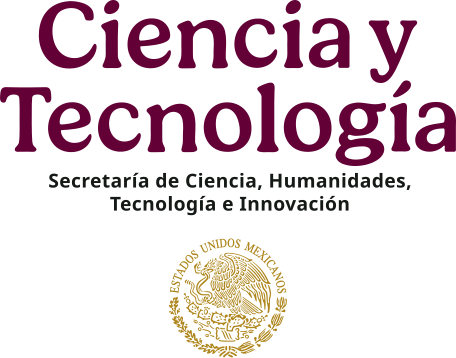Cuando los santos también migran. Conflictos transnacionales por el espacio y la pertenencia
DOI:
https://doi.org/10.17428/rmi.v3i11.1191Palabras clave:
migración internacional, prácticas transnacionales, religiosidad, Puebla, Nueva YorkResumen
El artículo tiene como objetivo fundamental contribuir al estudio de la religiosidad vinculada a los procesos migratorios; es decir, cómo es vivida y practicada por los actores en términos del lugar y de las temporalidades involucradas en la migración como experiencia vital. Es de especial interés observar la experiencia que produce la migración en las comunidades de fe de migrantes, pero particularmente este artículo se pregunta cómo las prácticas de religiosidad ocurren y generan vínculos transnacionales y cómo tales vínculos no sólo armonizan las relaciones sociales y crean otros espacios, sino también cómo cuestionan las fronteras de la propia comunidad, por un lado, y retan los conceptos tradicionales de membresía comunitaria y pertenencia, por el otro. El caso que documentamos es el de la celebración y devoción a Santiago Apóstol en Chila de la Sal, Puebla –en la Región Mixteca poblana–, en el contexto de una comunidad de migrantes internacionales cuyo destino principal es la ciudad de Nueva York. Asimismo, el artículo aborda los dilemas comunitarios que plantea el hecho de que Santiago Apóstol viaje a Nueva York para realizar su celebración patronal.
ABSTRACT
This article’s fundamental objective is to contribute to the study of religiosity linked to migration. Put another way, it examines how social actors live and practice religion in terms of the place and the spaces entailed in migration as a vital experience. Observing the experience of migration on migrant faith communities is of special interest, but this article particularly asks how the practice of religion occurs and creates transnational connections. It also asks how those connections not only harmonize social relations and create other spaces but also how they, on one hand, call into question the boundaries of the community itself, and on the other, challenge traditional concepts of community membership and belonging. We document the case of the celebration and worship of Santiago Apóstol (the Apostle James) in Chila de la Sal, in the Mixtec region of Puebla, in the context of a community of international migrants whose main destination is New York City. The article also addresses community dilemmas posed by the transfer of Santiago Apóstol to New York for the patron saint’s day.
Referencias
Appadurai, Arjun, “Global Ethnoescapes: Notes and Queries for a Transnational Anthropology”, en Richard Fox (ed.), Recapturing Anthropology, Santa Fe, Nuevo México, School of American Research Press, 1991, pp. 191-210.
Ávila Molero, Javier, “Worshipping the Señor de Qoyllur Ritti in NewYork”, trad. de Erica Oshier, Latin American Perspective, vol. 32, núm. 1 (140), enero de 2005, pp. 174-192.
Baca Olamendi, Laura, Judith Bokser-Liwerant, Fernando Castañeda, Isidro H. Cisneros y Germán Pérez Fernández del Castillo (coords.), “Conflicto”, entrada del Léxico de la Política. Diccionario de Política, México, Facultad Latinoamericana de Ciencias Sociales (Flacso)/Consejo Nacional de Ciencia y Tecnología (Conacyt)/ Fondo de Cultura Económica, 2000.
Badillo, David A., “Mexicanos and Suburban Parish Communities. Religion, Space and Identity in Contemporary Chicago”, Journal of Urban History, vol. 31, núm. 1, Sage Publication, noviembre 2004, pp. 23-46.
Basch, Linda, Nina Glick-Schiller y Cristina Szanton-Blanc, Nations Unbound: Transnational Projects, Postcolonial Predicaments and Deterritorialized Nation- States, Newark, Gordon and Breach, 1994.
Casanova, José, “Globalizing Catholicism and the Return to the ‘Universal Church’”, en Susanne H. Rudolph y James Piscatori (eds.),Transnational Religion and Fading States, Boulder (Col.), Westview Press, 1997.
Durand, Jorge, y Douglas S. Massey, Milagros en la frontera. Retablos de migrantes mexicanos a Estados Unidos, México, El Colegio de San Luis/ Centro de Investigaciones y Estudios Superiores en Antropología Social, 2001.
Durand, Jorge, “El Talibán Americano y la Virgen de San Juan de los Lagos.Devoción mariana en un contexto protestante”, en Miguel J. Hernández Madrid y Elizabeth Juárez Cerdi (eds.), Religión y cultura. Crisol de transformaciones, Zamora (Michoacán), El Colegio de Michoacán/Consejo Nacional de Ciencia y Tecnología, 2003, pp. 165-177.
Faist, Thomas, The Volume and Dynamics of International Migration and Transnational Social Spaces, Oxford, Oxford University Press, 2000.
Gobierno del Estado de Puebla, Los municipios de Puebla, Puebla, 1988.
Gonzales, Manuel, Mexicanos: A History of Mexicans in the United States, Bloomington, Indiana University Press, 1999.
Guarnizo, Luis Eduardo, y Michael Peter Smith, “The Locations of Transnationalism”, en Transnationalism from Below, Comparative Urban and Community Research, 6:3-34, 1998.
Guarnizo, Luis Eduardo, “The Economics of Transnational Living”, International Migration Review, vol. 37, núm. 3, Academic Research Library, Nueva York, otoño de 2003, pp. 666-699.
Hagan, Jacqueline, y Helen Rose Ebaugh, “Calling upon the Sacred: Migrants’ use of Religion in the Migration”, International Migration Review, vol. 37, núm. 4, invierno de 2003, pp. 1145-1162.
Herberg, Will, Protestant, Catholic, Jews: An Essay in American Religious Sociology, Garden City (Nueva York), Anchor Books, 1960.
Hernández Madrid, Miguel J., “Diversificación religiosa y migración en Michoacán”, en Gustavo López Castro (ed.), La diáspora michoacana, Zamora (Michoacán), El Colegio de Michoacán, 2003, pp. 165-192.
Hondagneu-Sotelo, Pierrette, Genelle Gaudinez, Héctor Lara y Billie C. Ortiz, “‘There is a Spirit that Transcends the Border’: Faith, Ritual, and Postnational Protest at the U.S.-Mexico Border”, Sociological Perspectives, vol. 47, núm. 2, Berkeley, University of California Press, 2004, pp. 133-159.
Instituto Nacional de Estadística, Geografía e Informática (INEGI), Censo General de Población, México, 1970, 1980, 1990 y 2000.
Jones-Correa, Michael A., y David L. Leal, “Political Participation: Does Religion Matter?”, Political Research Quarterly, vol. 54, núm. 4, University of Utah, diciembre de 2001, pp. 751-770.
Kearney, Michael, “The Local and the Global: The Anthropology of Globalization and Transnationalism”, Annual Review of Anthropology, 24, 1995, pp. 547-565.
Levitt, Peggy, “The Local-level Global Religion: The Case of U.S.-Dominican Migration”, Journal for the Scientific Study of Religion, vol. 37(1), 1998, pp. 74-89.
Levitt, Peggy, “Between God, Ethnicity, and Country: An Approach to the Study of Transnational Religion”, ponencia presentada en el Workshop on Transnational Migration: Comparative Perspectives, Princeton University, 30 de junio-1 de julio de 2001.
———, “Redefining the Boundaries of Belonging: The Institutional Character of Transnational Religious Life”, Sociology of Religion, vol. 65, núm. 1, primavera de 2004, pp. 1-18.
———, y Nina Glick-Schiller, “Conceptualizing Simultaneity: A Transnational Social Field Perspective on Society”, International Migration Review, vol. 38, Center for Migration Studies, Nueva York, otoño de 2004, pp. 1002-1039.
Levitt, Peggy, y Ninna Nyberg-Sorensen, “TheTransnationalTurn in Migration Studies”,Global Migration Perspectives, núm. 6, Global Commission on International Migration, 2004, en web:http://www.gcim.org.
Lorentzen, Lois Ann, “Prácticas religiosas transnacionales, aculturación y migración. Estudios migratorios e identidad jesuita: Avanzando un camino adelante”, ponencia presentada en el Coloquio Internacional Migración: ReconfiguraciónTransnacional y Flujos de Población, Universidad Iberoamericana de Puebla, Puebla, 19-21 de octubre de 2005, 14 pp.
Loveland, MatthewT., David Sikkink, Daniel J. Myers y Benjamin Radcliff, “Private Prayer and Civic Involvement”, Journal for the Scientific Study of Religion, vol. 44(1), 2005, pp. 1-14.
Mahler, Sarah, y Katrin Hansing, “Toward a Transnationalism of the Middle. HowTransnational Religious Practices Help Bridge the Divides between Cuba and Miami”, Latin American Perspectives, vol. 32, núm. 1(140), enero de 2005, pp. 121-146.
McAlister, Elizabeth, “Globalization and the Religious Production of Space”, Journal for the Scientific Study of Religion, vol. 44(3), 2005, pp. 249-255.
Menjívar, Cecilia, “Religion and Immigration in Comparative Perspective: Catholic and Evangelical Salvadorans in San Francisco,Washington, D.C., and Phoenix”, Sociology of Religion, vol. 64, núm. 1, primavera de 2003, pp. 21-45.
Odgers Ortiz, Olga, “Migración, identidad y religión: aproximaciones al estudio del papel de la práctica religiosa en la redefinición identitaria de los migrantes mexicanos”, Migrations Etas-Unis Mexique terre d’accueil, núm. 7, 2003, pp. 1-10.
Ostergren, R., CommunityTransplanted: TheTrans-Atlantic Experience of a Swedish Immigrant Settlement in the Upper Midwest, 1835-1915, Madison, University of Wisconsin, 1988.
Pineda, Ana María, “Imágenes de Dios en el camino: Retablos, ex-votos, milagritos, and Murals”, Theological Studies, vol. 65, núm. 2, 2004, pp. 364-379.
Pratt, Mary Louise, “¿Por qué la Virgen de Zapopan fue a Los Ángeles? Algunas reflexiones sobre la movilidad y la globalidad”, A Contracorriente. A Journal on Social History and Literature in Latin America, vol. 3, 2006, pp. 1-33.
Rivera Sánchez, Liliana, “Belongings and identities: Migrants between the Mixteca and New York”, tesis doctoral de sociología, New School for Social Research, Nueva York, 2004.
———, “Religious Institutions, Actors and Practices: The Construction of Transnational Migrant Organizations and Public Spaces between Mexico and the United States”, informe introductorio presentado en el Workshop on Mexican Migrant Civic and Political Participation, Wilson Center, Washington, D. C., 4 y 5 de noviembre de 2005a.
———, “La formación de un circuito migratorio: trazando rutas, trayectorias y destinos desde la Mixteca poblana”, en Fernando F. Herrera Lima y Marcela Ibarra Mateos (eds.), Migrantes a NuevaYork, México, Universidad Autónoma Metropolitana-Iztapalapa/La Casa del Tiempo/Universidad Iberoamericana-Campus Puebla (Colección en Ciencias Sociales), 2005b (en proceso de publicación).
Sánchez-Carretero, Cristina, “Santos y Misterios as Channels of Communication in the Diaspora: Afro-Dominican Religious Practices Abroad”, Journal of American Folklore, vol. 118, verano de 2005, pp. 308-327.
Secretaría de Gobernación, Enciclopedia de los Municipios de México, México, 1999.
Smith, Robert, “Los Ausentes siempre Presentes: The Imagining, Making and Politics of a Transnational Migrant Community betweenTicuani Puebla, Mexico, and New York City”, tesis doctoral en ciencias políticas, Columbia University, 1995.
Vásquez, Manuel, y Marie Friedmann Marquardt, Globalizing the Sacred: Religion across the America, New Brunswick (Nueva Jersey), Rutgers University Press, 2003, 251 pp.
Vertovec, Steven, “Religion and Diaspora”, ponencia presentada en la conferencia New Landscapes of Religion in the West, School of Geography and the Environment, University of Oxford (cuaderno de trabajo, 01-01, Transnational Communities Programme), 27-29 de septiembre de 2000.
Warner, Stephen, “Religion, Boundaries and Bridges-The 1996 Paul Hanly
Furfey Lecture”, Sociology of Religion, vol. 58, núm. 3, otoño de 1997, pp. 217-238.
———, y J. G. Wittner (eds.), Gathering in Diaspora: Religious Communities and the New Immigration, Filadelfia,Temple University Press, 1998.
Yang, Fenggang, y Helen Rose Ebaugh, “Transformations in New Immigrant Religions and their Global Implications”, American Sociological Review, vol. 66, núm. 2, abril de 2001, pp. 269-288.
Fecha de recepción: 29 de marzo de 2006
Fecha de aceptación: 13 de junio de 2006
Descargas
Publicado
Número
Sección
Licencia
Las/los autoras/es que publiquen en esta revista aceptan las siguientes condiciones:
- Las/los autoras/es conservan los derechos de autor y ceden a la revista Migraciones Internacionales (RMI) el derecho de la primera publicación, mediante el registro de los textos con la licencia de Creative Commons Atribución-No comercial-Sin derivar 4.0 internacional (CC BY-NC-ND 4.0), que permite a terceros utilizar lo publicado siempre que mencionen la autoría del trabajo y a la primera publicación en esta revista.
- Autorizan que su artículo y todos los materiales incluidos en él sean reproducidos, publicados, traducidos, comunicados y transmitidos públicamente en cualquier forma o medio; así como efectuar su distribución al público en el número de ejemplares que se requieran y su comunicación pública, en cada una de sus modalidades, incluida su puesta a disposición del público a través de medios electrónicos o de cualquier otra tecnología, para fines exclusivamente científicos, culturales, de difusión y sin fines comerciales.
- Los autores/as pueden realizar otros acuerdos contractuales independientes y adicionales para la distribución no exclusiva de la versión del artículo publicado en esta revista (por ejemplo: incluirlo en un repositorio institucional, página web personal; o bien publicarlo en un libro) siempre que sea sin fines comerciales e indiquen claramente que el trabajo se publicó por primera vez en Migraciones Internacionales (RMI), [agregando la ficha bibliográfica correspondiente: Autor/es. (año). Título del artículo. Migraciones Internacionales, volumen (número), pp. doi: xxxx ].
Para ello, las/los autoras/es deben remitir el formato de carta-cesión de la propiedad de los derechos de la primera publicación debidamente llenado y firmado. Este documento debe cargarse en formato PDF en archivos complementarios dentro de la plataforma OJS.
Este obra está bajo una licencia de Creative Commons Atribución-No comercial-Sin derivar 4.0 internacional (CC BY-NC-ND 4.0)..



 Idioma
Idioma










